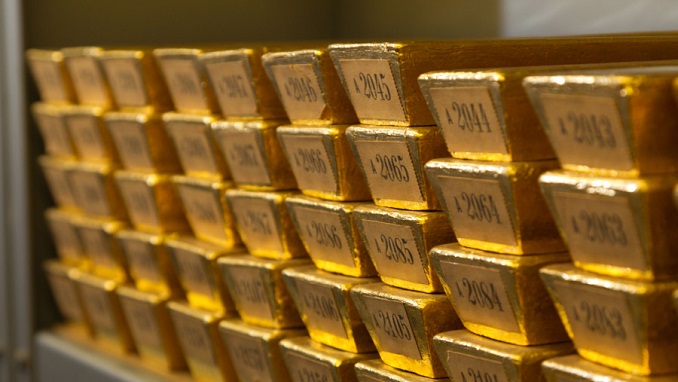The price of gold is set to skyrocket in the next months amid an escalating U.S.-China trade war, and Russia, which has been stockpiling the precious metal, is set to profit, RFE/RL reports.
While upgrading Russia’s debt rating, credit rating agency Fitch said last week that the country “will continue to build up its foreign currency and gold reserves to protect its economy as threats of more U.S. sanctions loom.”
Last week, gold surged above $1,500 an ounce in U.S. dollars for the first time since September 2013. It also hit historic all-time highs when priced in a number of other world currencies, including the British pound, Russian ruble, and Indian rupee.
Goldman Sachs Group upgraded its gold forecast for the first time this year, upping its 3-month and 6-month projections to $1,575 and $1,600 an ounce in light of escalating trade war tensions.
After rising nearly 4% last week, gold’s rally is far from over, according to analysts at Goldman, who see more upside in the yellow metal.
“Gold prices have increased further as a weaker CNY sparked substantial U.S. and global growth fears. With growth worries likely to persist, gold could rise further, driven by an increased ETF allocation from portfolio managers, who continue to under-own gold. We raise our 3, 6, 12 month gold price forecasts from $1,450, $1,475, $1,475/toz to $1,575, $1,600 and $1,600/toz, respectively,” the bank’s analysts said in a note.
Russia is the world’s second-largest oil producer and its budget is heavily dependent on crude prices. The Kremlin’s “prudent” economic policies have cut the price of oil required for the Russian budget to balance from $110 a barrel in 2013 to less than half that amount in 2018, according to Fitch.
This week, Bloomberg reported that for the first time in eight years, the Bank of Russia’s total stockpile of cash, gold, and other securities is about to surpass Saudi Arabia’s, highlighting the Kremlin’s leverage in talks between major oil producers about how much to reduce production.
According to the World Gold Council, central banks purchased nearly 70 percent more gold during the first quarter of the year than they did during the previous year’s corresponding period. Russia is no exception, as its reserves have swelled 45% in the past four years to total $518 billion in June.












